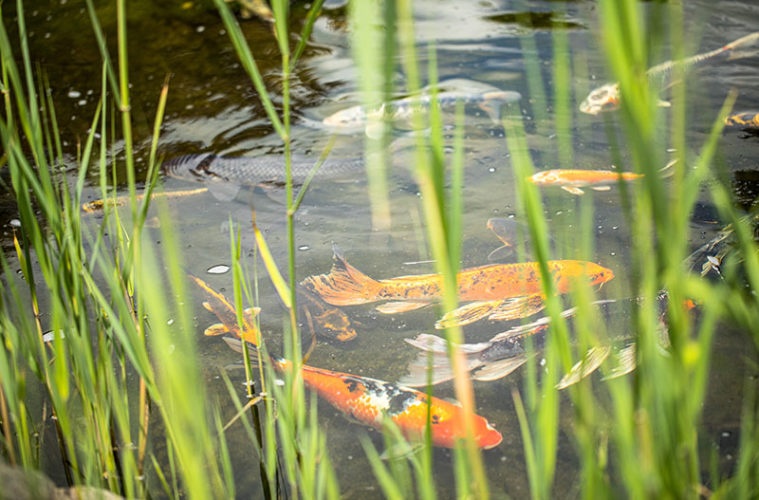For Lisa Giannino, the water garden focus just flowed. When the family first opened shop in 1978, Country Gardens of Rowley was serving up the usual fare of annuals, perennials, holiday plants, and cut flowers. And that inventory hasn’t diminished: They still sell the full roster of garden center favorites. But behind the scenes, family members were cultivating a personal fascination for water gardens. Whenever they traveled, they slipped a few visits to gardens with fountains, waterfalls, and all things aquatic into the itinerary. Longwood Gardens, Lilypons Water Gardens, they saw them all. Given their penchant, it didn’t take long before Country Gardens began installing ponds at their 6-acre garden center. From there, water sort of seeped into their identity. From the early 1990s onward, Country Gardens became the foremost regional resource for all things wet and wonderful.
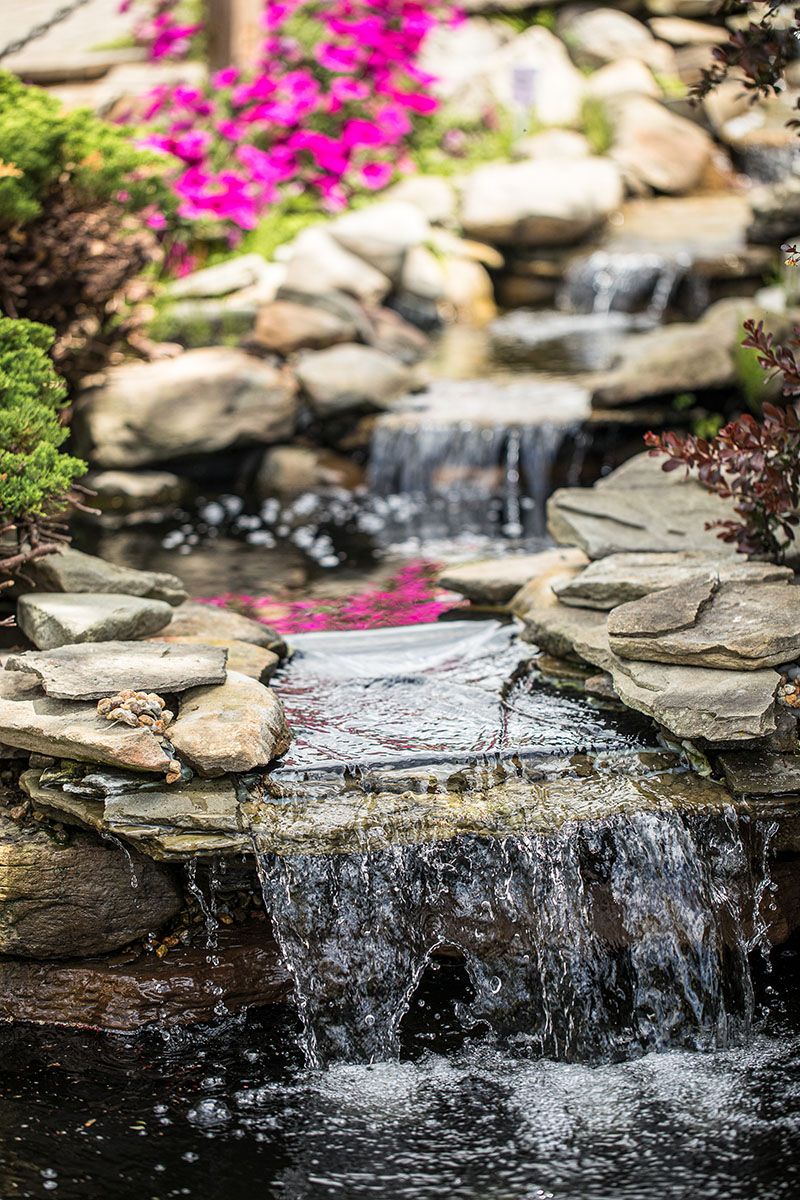
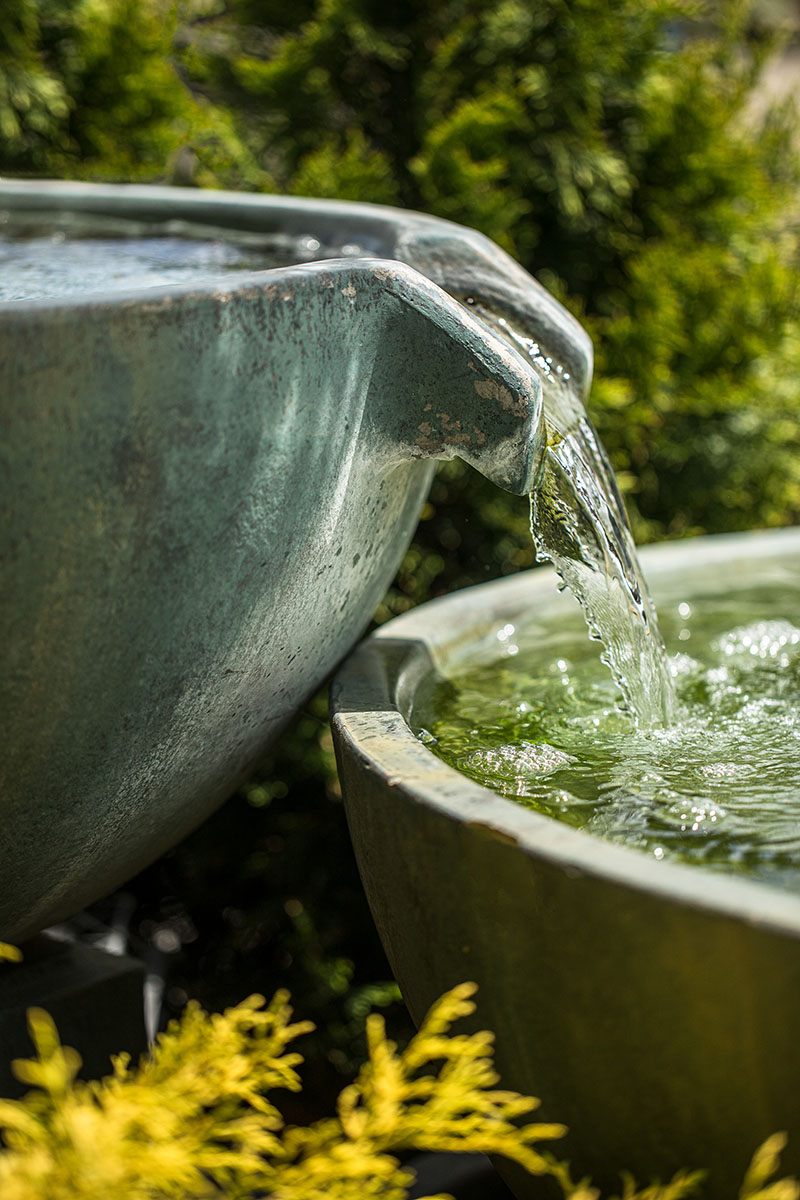
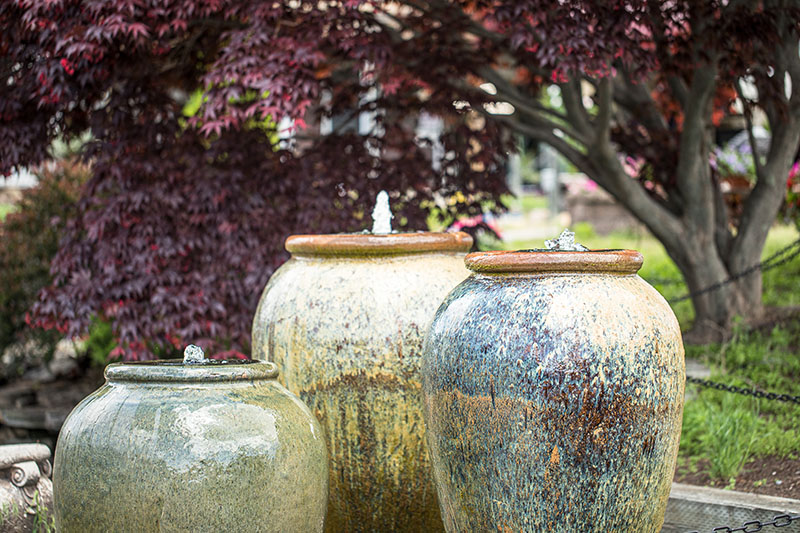
“Water gardens are a different kind of space,” Lisa Giannino explains her attraction. “They’re so tranquil and serene.” And that peacefulness prevails no matter how water is incorporated into a landscape. Her definition of a water feature runs the gamut from fountains and bubblers to full-fledged ponds of any size. “The pond that our average customer installs is about 1,000 to 1,500 gallons,” she explains of the typical 10-by-15 foot project. But those dimensions are just the happy median. You could go larger or smaller and still gain the many benefits of bringing water into the picture. And Country Gardens likes to encourage their clients to see the full concept. “It really is a garden,” says Giannino, “when you add the plants and the wildlife, it becomes a different kind of water.”
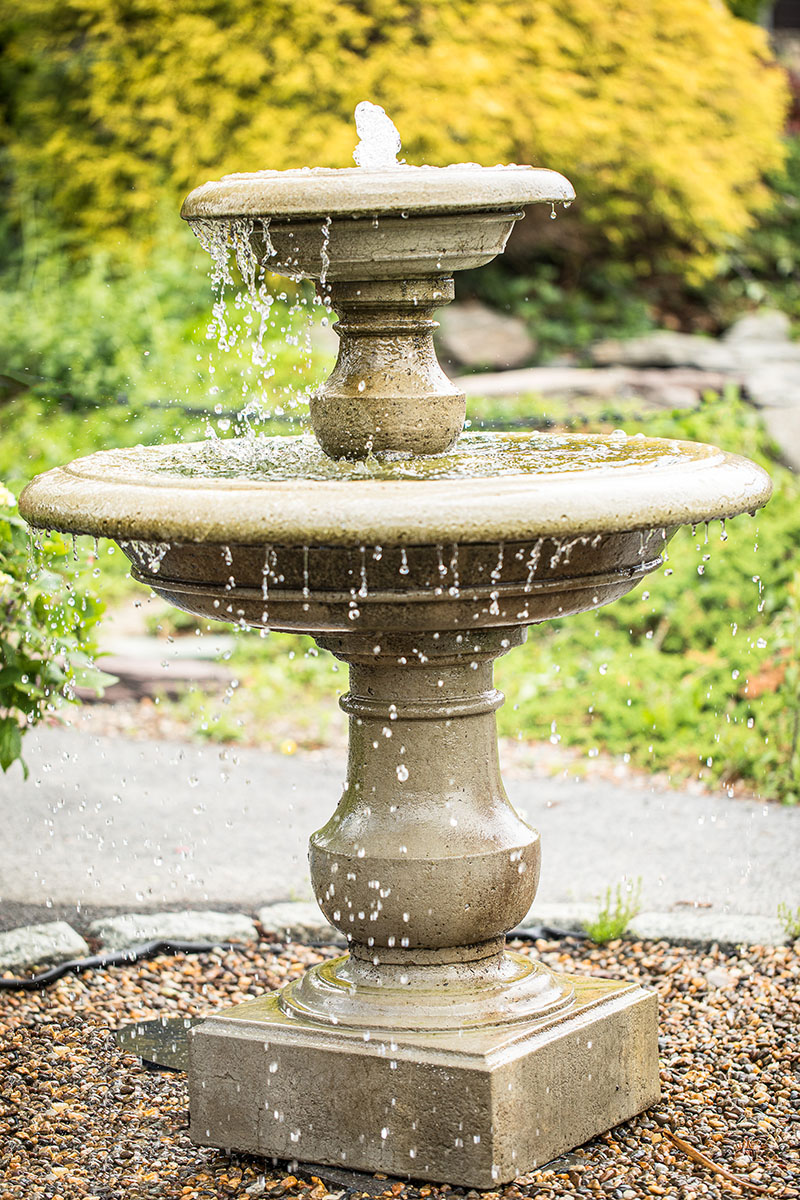
Country Gardens is the local resource for all the ingredients to make a water garden reach its full potential. Beyond all the fixings to create a pond, they offer koi and other fish usually associated with ponds. But what you purchase is just the starting point. The birds and the bees will come to drink and bathe, while other critters are bound to be attracted, including turtles, frogs, salamanders, and dragonflies. Plus, plants will proliferate. The nursery is stocked with the complete arena of aquatic and marginal plants to make the scene full service. From water lilies and lotus to bog-loving plant life, they have it all. “From soup to nuts we can help with the whole ecosystem,” Giannino says.
When Country Gardens dove into ponds, they were greeted by an appreciative local audience. After all, coastal towns tend to be populated by people who love the water. Even homeowners who live within view of the ocean find that adding an element to echo the sea close to the house enhances the experience. And access to fresh water serves a different group of critters compared to the seaside gang. The habitats are totally complementary.
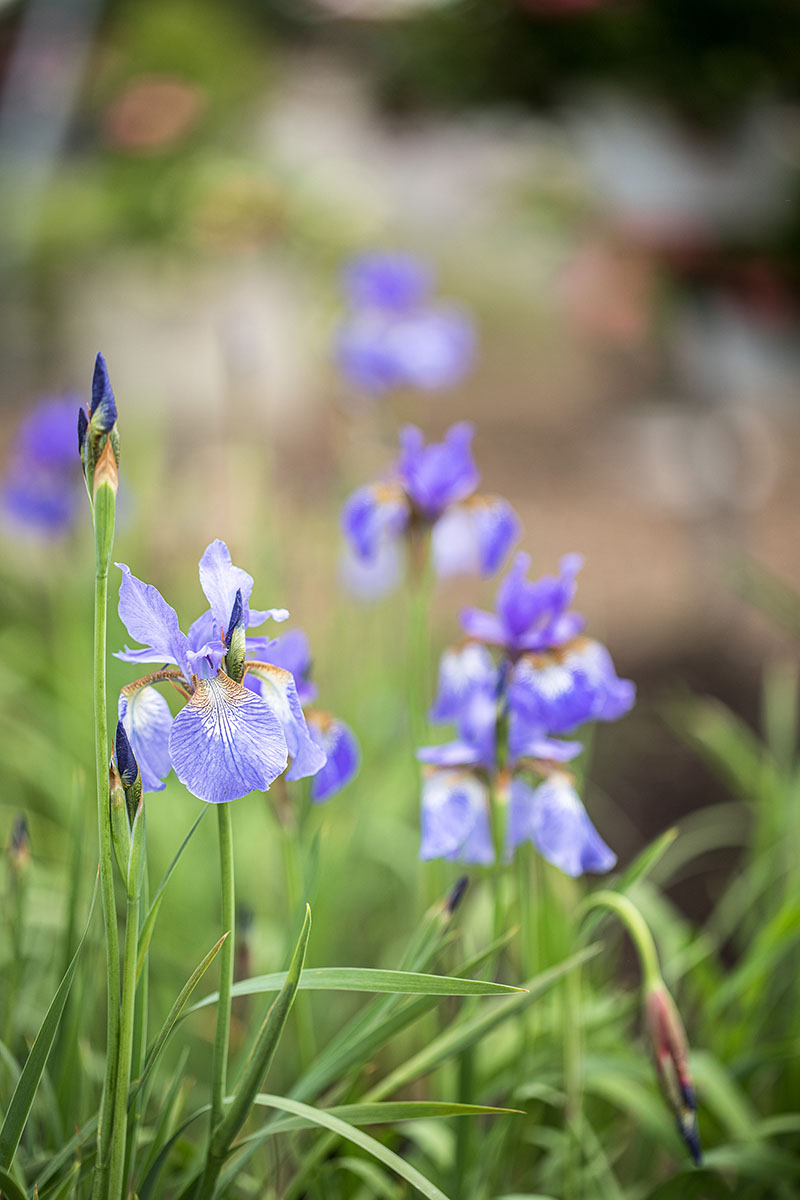
Over the years, the experts at Country Gardens have fielded a whole lot of questions. First on everyone’s mind is whether their property provides the right space to make this happen. In answer to the often-asked query of where to site a water garden, Giannino suggests installing a pond close to your home. “Many people think they want a pond as a destination in the distance, but practically speaking, you want to see and enjoy the ecosystem as fully as possible.” A flat area is optimal, but a water feature can also be built into a hillside—which will make a waterfall easier to design into the composition. Practical issues should be addressed. When the soil retains too much water and the water table is high, problems might arise. Ledge or tree roots can be issues. On the other hand, features previously incorporated into your property can add to the experience. For example, a retaining wall is a wonderful way to add to the ambiance.
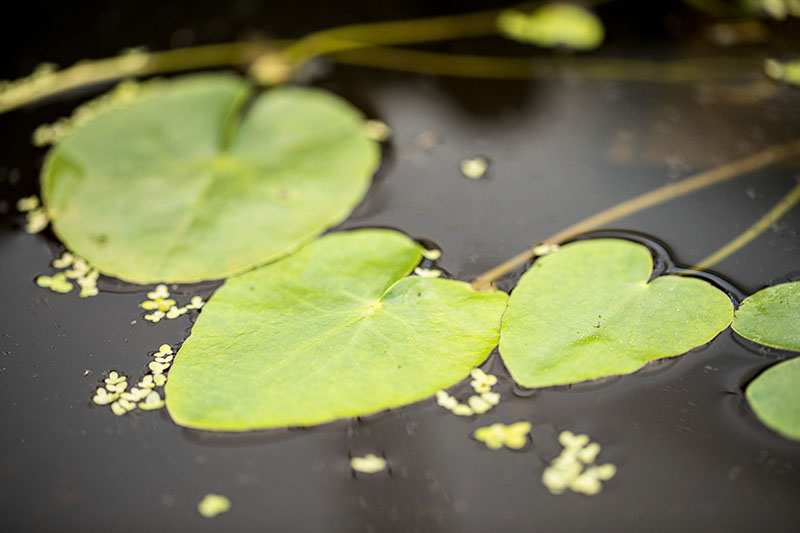
What’s involved in a water garden? It really depends on how deep you want to wade into the project. With any water feature, safety should be your first point of focus. In general, any type of fountain or pond will require electricity to run the recirculating pumps and juice up filtration systems to maintain water quality (Giannino has found that solar pumps do not tend to be sufficiently perfected at this point to function reliably). You will need to install electrical apparatus with all the permits and experts that requires. Fences might be necessary for water features of certain depths, check with local ordinances. In general, staying with shallow is safer.
Beyond the practical issues of pond installation, Lisa Giannino loves to talk about enhancing the habitat, and she has a mental checklist of favorite plants that she recommends for ponds. High up on that roster are waterlilies. Available as winter hardy perennials or tropical versions, waterlilies can either remain outdoors throughout the year or require winter shelter. She suggests hosting waterlilies in containers submerged in the pond and weighed down with rocks. Hardy waterlilies are available in an array of colors including pink, red, white, and purple with color-tinged leaves. Tender nonhardy tropical versions have larger leaves, and their flowers tend to be more fragrant. Fond of the sun, water lilies unfold mid-morning and remain in blossom until mid-afternoon whereas their night-blooming counterparts take the evening shift and open around 4 to 5 p.m. Blooming primarily from June to September, beauty is not the only benefit of waterlilies: They also filter the water.

Lotus is another crowd pleaser. With large leaves that stand majestically above the water, lotus plants have a shorter flowering season than waterlilies, gearing up for action in July. However, these statuesque plants are handsome even when not in flower, and current options add to the array of blossom hues available.
Water snowflakes are also among Giannino’s favorites. These non-hardy waterlily look-alikes produce smaller pads than lilies studded with white or creamy star-shaped fuzzy flowers that lie on the water surface. Beneficial for filtering algae, they are an adorable addition to a pond or any water feature.
Other aquatic plants include water hyacinths, which are not winter hardy in the North Shore region but can be grown as annuals. Prolific multipliers with roots that serve as filtration systems to keep the water clean, they provide coverage for the water surface to protect fish from predators. Another suitable plant is papyrus, which can be submerged in its container. Although not hardy in the North Shore region, they can be treated as annuals. Similarly, cannas can be lowered into a pond and retrieved in autumn for winter storage. With remarkable broad leaves available in colors ranging from cranberry to foliage streaked with yellow veins (variegated ‘Bengal Tiger’ is Giannino’s personal favorite), they are visible from afar.
The list of plants that grow blissfully along the edge of a pond is lengthy and filled with diversity, from ornamental grasses to conifers and perennials. Giannino suggests using these plants as camouflage to hide the liner and soften a rock edging. Everything from juniper to bugle weed can do the trick with scenic detours into perennial mosses, heucheras, tiarellas, and heucherellas for the purpose. Carnivorous plants add another thrilling element that everyone loves.
Country Gardens does it all, and their displays conspire to lure you over the edge. With ponds galore on the property, plus a full inventory of colorful fish including domestic koi and shubunkin goldfish, they are geared to help you take the plunge.

